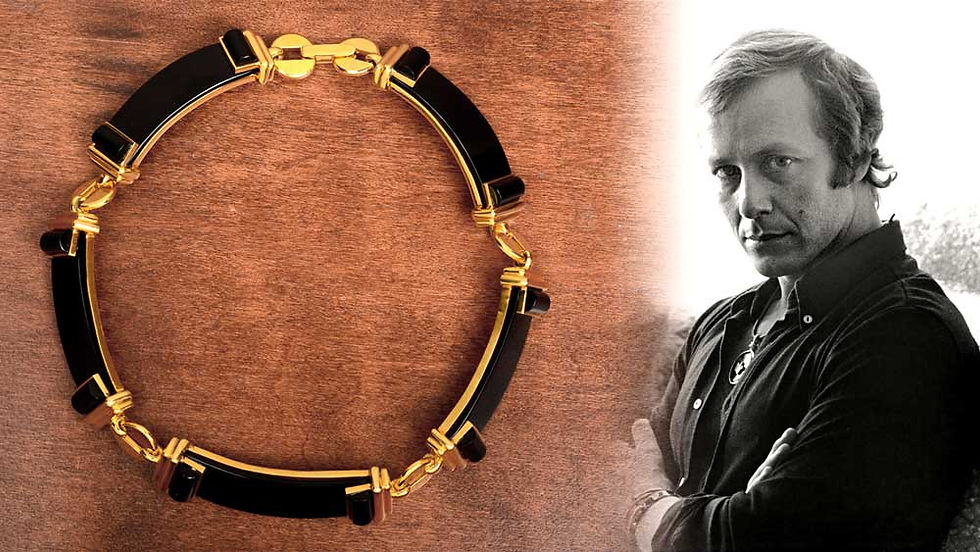When Culture Shapes Campaigns: What Apple's Korean Ad Teaches Global Marketers
- Professor Simon LEUNIG

- 2 hours ago
- 4 min read
When Apple quietly changed its latest iPhone AirPods ad in Korea by removing a hand gesture that was included in global versions of the same ad, it sparked more than just online interest. It also reminded people of an old marketing lesson: culture matters. What looked like a minor change to the design turned into a valuable lesson in being sensitive to other cultures and adapting your brand. A model in the global version of the ad holds an iPhone and makes a casual "OK" gesture with her hand, which is seen as a good sign in many places. In some Asian cultures, such as Korea, however, that same gesture can have a different meaning or even be perceived as negative. Apple's decision to make the image more local wasn't just about its appearance; it was also about respect.
![Image credit: YouTube thumbnails of new iPhone Air advertisements; the Korean version lacks fingers [SCREEN CAPTURE] (2025)](https://static.wixstatic.com/media/3bb63d_b06be140f424451f9797ae718cdc8596~mv2.png/v1/fill/w_980,h_862,al_c,q_90,usm_0.66_1.00_0.01,enc_avif,quality_auto/3bb63d_b06be140f424451f9797ae718cdc8596~mv2.png)
The Strength of Localization
Cultural understanding has long been a key factor in the success of marketing campaigns worldwide. When McDonald's introduced its McSpicy and Teriyaki Burgers to Asia, or Starbucks brought its Red Bean Frappuccinos to China and Pandan Coconut drinks to Indonesia, they weren't just selling food; they were offering products that people were accustomed to. These success stories should inspire marketers to embrace cultural localization as a powerful tool in their campaigns.
However, history is replete with examples of how cultural mistakes can result in millions of dollars in losses. Pepsi's "Bring Back Your Ancestors" translation mistake in China and Gerber's baby food packaging with a picture of a baby in places where people thought it meant the contents are two well-known examples of what not to do. These cautionary tales underscore the importance of cultural understanding in preventing costly mistakes.
Adapting Beyond Translation: Localization Is More Than Just Changing Words.
Netflix has done well in Asia because it has invested in stories that are important to people in those regions, such as Squid Game (South Korea), Money Heist: Korea, and Delhi Crime (India). The same is true for Coca-Cola's "Share a Coke" campaign, which changed its logo to popular local names. It worked because it felt personal and relevant to every culture it went to, fostering a sense of connection and engagement. Even high-end brands are getting smarter. Louis Vuitton collaborated with Yayoi Kusama to celebrate Japanese art, and Dior's Spring 2020 show in Marrakech showcased African craftsmanship.
Celebrities as Cultural Ambassadors: Celebrities often connect global branding with local feelings. BTS's work with Hyundai and Samsung turned regular product ads into strong stories about Korean pride and identity. BLACKPINK's work with Chanel, Celine, and Dior is another example of how global luxury brands use cultural icons to connect with fans in a real way.
In the West, Taylor Swift's collaboration with Stella McCartney, Rihanna's Fenty Beauty, and LeBron James' partnership with Nike demonstrate how stories rooted in personal identity and culture redefine what it means to be loyal to a brand. What do they all have in common? Good marketing always shows who people are, not just what they buy.
Culture in the Age of AI and Globalization
As brands utilize AI and big data to more effectively target their audiences, the human element, or culture, becomes even more crucial. Algorithms can guess how people will act, but only cultural understanding can tell you why they do what they do. For example, TikTok's algorithms adjust the content it displays in different markets based on what makes people laugh, what's popular, and when it is most likely to be viewed by local users.
Fashion and lifestyle brands such as Uniqlo, Zara, and H&M are also refining their strategies for localizing their products. Uniqlo's "Lifconceptr" idea, which is designed for worldwide tailored to tropical lifestyles, is what makes the company successful in Southeast Asia. At the same time, Gucci's Lunar New Year campaigns and Burberry's partnerships with Chinese artists demonstrate how high fashion is increasingly utilizing cultural storytelling to remain relevant. Artistic storytelling is the practice of incorporating cultural elements, such as traditions, festivals, or local art, into a narrative that resonates with the target audience, thereby making the brand more relatable and appealing.
What Future Leaders Can Learn
Apple's changes to its Korean ad may have been small, but they reveal a significant truth: in global marketing, local knowledge is a powerful global asset. Companies that understand and respect cultural differences not only create more effective ads, but they also connect with people on a deeper level. Our business programs at Raffles teach students how to think globally and act locally. They learn about consumer psychology, cross-cultural management, and the art of effectively adapting a brand. Students learn to navigate the challenges of global markets with cultural intelligence and creative strategies through real-world projects and collaborations with people from other countries.
Professor Simon LEUNIG
President, Raffles Kuala Lumpur, Malaysia
References
Apple Inc. (2025). Apple quietly removes controversial hand gesture from Korean iPhone advertisement. Korea JoongAng Daily. Retrieved from https://koreajoongangdaily.joins.com/news/2025-09-11/business/industry/Apple-quietly-removes-controversial-hand-gesture-from-Korean-iPhone-advertisement/2397175
BBC News. (2024). Nike apologizes for Air Max logo controversy. Retrieved from https://www.bbc.com
Coca-Cola Company. (2023). Share a Coke campaign global impact report. Retrieved from https://www.coca-colacompany.com
Dolce & Gabbana. (2018). Public apology following Shanghai controversy. The Guardian. Retrieved from https://www.theguardian.com
Louis Vuitton. (2023). Louis Vuitton x Yayoi Kusama collaboration. Retrieved from https://www.vogue.com
McDonald’s Corporation. (2024). Global menu innovation and localization strategy. Retrieved from https://www.mcdonalds.com
Netflix. (2024). Local content success stories in Asia. Retrieved from https://about.netflix.com
PepsiCo. (2023). Marketing case studies: Lessons in localization. Retrieved from https://www.pepsico.com
Starbucks Corporation. (2024). Menu localization in Asian markets. Retrieved from https://stories.starbucks.com
Vogue Business. (2025). Global branding and cultural sensitivity in luxury marketing. Retrieved from https://www.voguebusiness.com













Comments